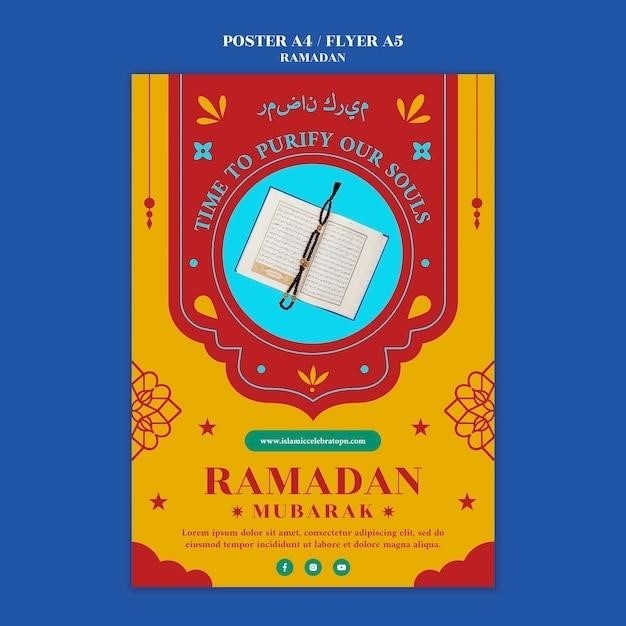The Grapes of Wrath Book PDF⁚ A Comprehensive Guide
This guide explores various avenues to access John Steinbeck’s “The Grapes of Wrath” as a PDF, covering legitimate sources, copyright considerations, and available editions․ Discover options for free and paid downloads, ensuring legal access to this literary classic․
Finding Free PDF Downloads
Locating free PDFs of “The Grapes of Wrath” requires caution․ Many websites offer downloads, but be wary of illegal copies․ Public domain status varies by edition and region; some older editions might be freely available․ Legitimate sources like Internet Archive often host public domain books․ Always check the copyright information before downloading any PDF to avoid legal issues․ Free downloads may lack formatting or have low-quality scans․ Consider the trade-off between free access and quality․ Remember, respecting copyright is crucial for supporting authors and publishers․
Accessing the Book Through Online Archives
Reputable online archives, such as the Internet Archive, offer a valuable resource for accessing “The Grapes of Wrath” in digital formats․ These archives often hold digitized versions of public domain books, providing legal access to older editions․ Searching the Internet Archive’s extensive collection using keywords like “Grapes of Wrath” and “Steinbeck” should yield results․ Check the metadata carefully to verify the edition’s copyright status and ensure it’s a legitimate copy․ Many archives provide different file formats, including PDFs, allowing users flexibility in how they access the text․ Always double-check the source’s reliability before downloading․
Legitimate Sources for Digital Copies
For legally acquiring digital copies of “The Grapes of Wrath,” consider reputable online bookstores like Amazon Kindle, Barnes & Noble Nook, or Google Play Books․ These platforms offer authorized digital editions, often in various formats, including PDF․ Purchasing from these established sources guarantees you are accessing a legally-obtained copy and supporting the copyright holder․ Additionally, many public libraries offer e-book lending services through apps such as Overdrive or Libby, providing access to digital books, including potentially “The Grapes of Wrath,” without purchase․ Check your local library’s online catalog for availability․
Different Editions and Formats Available
“The Grapes of Wrath” exists in numerous editions, each potentially offering a slightly different reading experience․ You might find unabridged versions preserving Steinbeck’s complete text, or annotated editions providing helpful context and analysis․ The availability of specific editions as PDFs may vary․ Some editions might include supplementary materials like author biographies or historical context․ Format-wise, PDFs often mirror the print version’s layout, while ePub or Kindle formats offer features like adjustable font sizes and text-to-speech․ Be aware that the formatting and features can differ significantly between different digital versions․ Consider what aspects are most important to your reading preferences when making your selection․
Understanding Copyright and Public Domain
Before downloading any PDF of “The Grapes of Wrath,” it’s crucial to understand copyright law․ While some older editions might be in the public domain, meaning freely available for download and distribution, many more recent versions remain under copyright protection․ Downloading copyrighted material without permission is illegal․ Public domain status usually depends on the publication date and the author’s death date․ Always verify the copyright status of a specific edition before downloading to avoid legal issues․ Websites offering free downloads should clearly state whether the book is in the public domain or if they possess the necessary rights for distribution․ Respecting copyright protects authors and their work․

The Novel’s Historical Context
Explore the profound impact of the Great Depression and the Dust Bowl on Steinbeck’s masterpiece, “The Grapes of Wrath,” and its unflinching portrayal of migrant workers’ struggles․
The Great Depression and the Dust Bowl
John Steinbeck’s “The Grapes of Wrath” is deeply rooted in the socio-economic realities of the 1930s; The Great Depression, a period of unprecedented economic hardship, devastated American agriculture․ Simultaneously, the Dust Bowl, a severe drought and dust storm phenomenon, ravaged the American Midwest, turning fertile farmland into barren dust․ These environmental and economic catastrophes forced millions of farmers, including the Joad family in Steinbeck’s novel, to abandon their homes and seek a better life elsewhere․ The novel vividly depicts the hardships faced by these migrants, their desperation, resilience, and the harsh realities of their displacement․ The widespread suffering and displacement caused by the Dust Bowl and the Great Depression form the historical backdrop against which the narrative of “The Grapes of Wrath” unfolds․ This historical context is crucial to understanding the novel’s themes of poverty, migration, and the search for dignity amidst adversity․ The book serves as a powerful testament to the human cost of these catastrophic events․
The Migrant Worker Experience
The Grapes of Wrath offers a searing portrayal of migrant workers during the Great Depression․ Forced from their Oklahoma farms by drought and economic hardship, the Joad family, like countless others, embarks on a grueling journey to California․ Steinbeck meticulously details the arduous conditions these migrants faced⁚ overcrowded vehicles, lack of food and sanitation, and the constant threat of disease․ Their search for work is met with exploitation and discrimination, highlighting the dehumanizing aspects of poverty and displacement․ The novel underscores the migrants’ resilience and their capacity for community in the face of adversity․ They share resources, offer mutual support, and forge bonds in their shared struggle for survival․ Steinbeck’s unflinching depiction of their experiences, from the physical hardships to the emotional toll, remains a powerful indictment of social injustice and a testament to the human spirit’s enduring strength․ The detailed accounts of their daily struggles make the migrant experience profoundly relatable and resonate deeply with readers․
Steinbeck’s Social Commentary
The Grapes of Wrath transcends a simple narrative; it serves as a potent social commentary on the injustices prevalent during the Great Depression․ Steinbeck doesn’t shy away from depicting the stark realities of poverty, exploitation, and the systemic failures that led to widespread suffering․ He critiques the wealthy landowners and corporations who profit from the desperation of migrant workers, highlighting the stark imbalance of power and the dehumanizing effects of capitalism․ The novel’s portrayal of the migrants’ struggles isn’t merely descriptive; it’s a call for social change․ Steinbeck advocates for empathy and understanding, urging readers to confront the ethical implications of societal structures that perpetuate inequality․ He emphasizes the importance of community and mutual aid in the face of adversity, suggesting that collective action is essential to overcome societal challenges․ The book’s enduring relevance lies in its continued ability to spark dialogue and inspire action toward a more just and equitable society․ Its social commentary remains strikingly relevant even today․
Key Themes and Characters
Explore the Joad family’s arduous journey, resilience against hardship, Tom Joad’s transformation, and the pervasive themes of community and faith within Steinbeck’s masterpiece․
The Joad Family’s Journey
The Joad family’s odyssey forms the emotional core of The Grapes of Wrath․ Forced from their Oklahoma farm by the Dust Bowl and the Great Depression, their westward migration to California is fraught with hardship and loss․ The novel meticulously details their struggles with poverty, hunger, and the exploitation they face as migrant workers․ Their journey is not merely geographical; it’s a symbolic representation of the human spirit’s tenacity in the face of overwhelming adversity․ We witness their internal conflicts, the erosion of familial bonds under pressure, and their unwavering hope for a better future, even as their circumstances relentlessly worsen․ The reader experiences the harsh realities of the era through their eyes, highlighting the human cost of economic devastation and social injustice․ Their collective experiences serve as a powerful commentary on the American Dream’s failure for many during this period․
Themes of Resilience and Community
Central to The Grapes of Wrath’s narrative are the interwoven themes of resilience and community․ Faced with relentless hardship and systemic oppression, the Joad family and fellow migrants demonstrate remarkable fortitude․ Their unwavering spirit, despite overwhelming odds, underscores the human capacity to endure suffering․ The novel also highlights the crucial role of community in times of crisis․ Shared struggles forge powerful bonds among the migrants, fostering mutual support and a sense of collective identity․ Acts of kindness, however small, become potent symbols of hope and solidarity․ This shared experience creates a powerful sense of community, offering solace and strength in the face of adversity․ The novel emphasizes that even in the darkest of times, human connection and mutual aid can provide resilience and hope․ This communal spirit becomes a source of strength, enabling them to navigate the challenges of their journey and maintain their humanity․
Tom Joad’s Transformation
Tom Joad’s character arc in The Grapes of Wrath is a pivotal element of the novel’s power․ Initially presented as a young man with a troubled past, his experiences during the arduous journey to California profoundly reshape him․ Exposure to the harsh realities of poverty, exploitation, and social injustice fuels his growing anger and disillusionment․ He witnesses firsthand the dehumanizing effects of the system, leading him to question established authority and embrace a more radical approach to social change․ Tom’s transformation is not merely a personal one; it reflects a broader societal shift, mirroring the growing unrest and collective consciousness among the migrant workers․ He evolves from a somewhat self-centered individual to a committed activist, fighting for the rights and dignity of his fellow migrants․ This transformation is crucial to the novel’s exploration of social justice and the power of collective action in the face of adversity․
The Role of Faith and Spirituality
Faith and spirituality in The Grapes of Wrath are complex and multifaceted, serving as both a source of comfort and a subject of questioning․ Characters grapple with their beliefs amidst immense suffering and hardship․ The unwavering faith of Grandma Joad, despite facing profound loss, provides a powerful example of resilience and spiritual strength․ However, the novel also explores the disillusionment that arises when faith fails to alleviate suffering․ The harsh realities of the Great Depression challenge traditional religious beliefs, leading some characters to question the existence of a benevolent God․ The contrast between the unwavering faith of some characters and the growing cynicism of others highlights the complexities of faith in the face of overwhelming adversity․ The novel doesn’t offer easy answers but instead presents a nuanced portrayal of the role of faith in the lives of individuals struggling for survival and dignity․

The Grapes of Wrath’s Legacy
The Grapes of Wrath remains a powerful and influential work, winning critical acclaim and inspiring numerous adaptations․ Its enduring legacy lies in its unflinching portrayal of social injustice and the enduring human spirit․
Critical Acclaim and Awards
Upon its release in 1939, The Grapes of Wrath garnered immediate critical acclaim, solidifying its place as a landmark achievement in American literature․ Its powerful depiction of the Great Depression and the plight of migrant workers resonated deeply with readers and critics alike․ The novel’s unflinching realism and compassionate portrayal of the Joad family’s struggles earned widespread praise․ This widespread recognition culminated in prestigious awards, most notably the Pulitzer Prize for Fiction in 1940, a testament to its literary merit and lasting impact․ The book’s success also extended beyond literary circles, influencing subsequent works and shaping public discourse on social justice and economic inequality․ Its impact continues to be felt today, making it a timeless classic․
Impact on American Literature
The Grapes of Wrath profoundly impacted American literature, leaving an indelible mark on subsequent generations of writers․ Its realistic portrayal of social injustice and the human condition established a new standard for social realism in fiction․ Steinbeck’s masterful use of language, character development, and narrative structure became a model for many aspiring authors․ The novel’s exploration of themes such as resilience, community, and the search for the American Dream continues to inspire and challenge readers․ Its influence can be seen in countless works that address social inequality, economic hardship, and the struggles of marginalized communities․ The novel’s enduring power lies in its ability to connect with readers on a deeply emotional level, prompting reflection on social responsibility and the pursuit of justice․ It remains a cornerstone of the American literary canon․
Adaptations to Film and Other Media
John Steinbeck’s The Grapes of Wrath has been adapted numerous times for film and other media, reflecting its enduring popularity and cultural significance․ The most famous adaptation is the 1940 film directed by John Ford, starring Henry Fonda, which itself became a classic, though it took significant liberties with the source material․ Beyond film, the novel has inspired stage productions, radio dramas, and even musical interpretations․ These adaptations often highlight different facets of the story, showcasing the adaptability of Steinbeck’s powerful narrative and its enduring resonance across various artistic mediums․ The continued interest in adapting The Grapes of Wrath underscores its lasting relevance and its capacity to be reinterpreted for contemporary audiences․ These diverse adaptations demonstrate the novel’s enduring power to captivate and engage audiences across generations․



